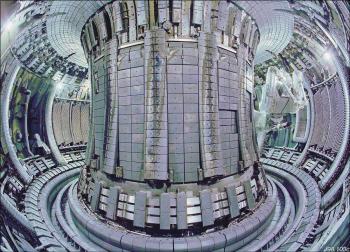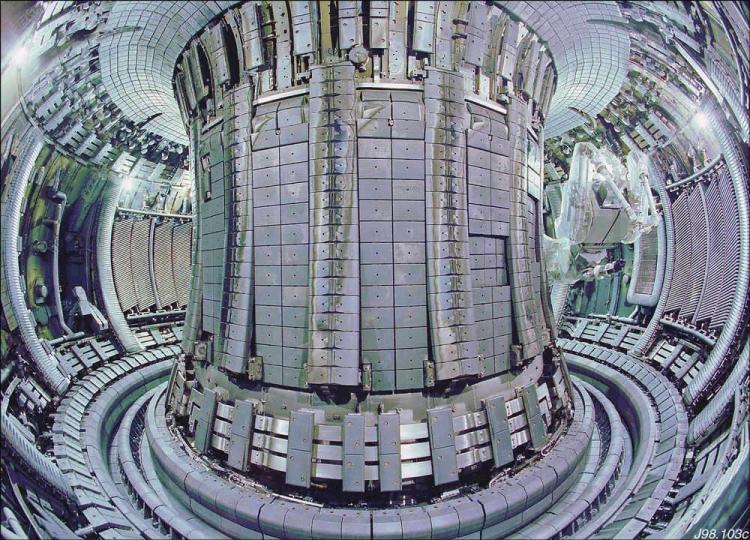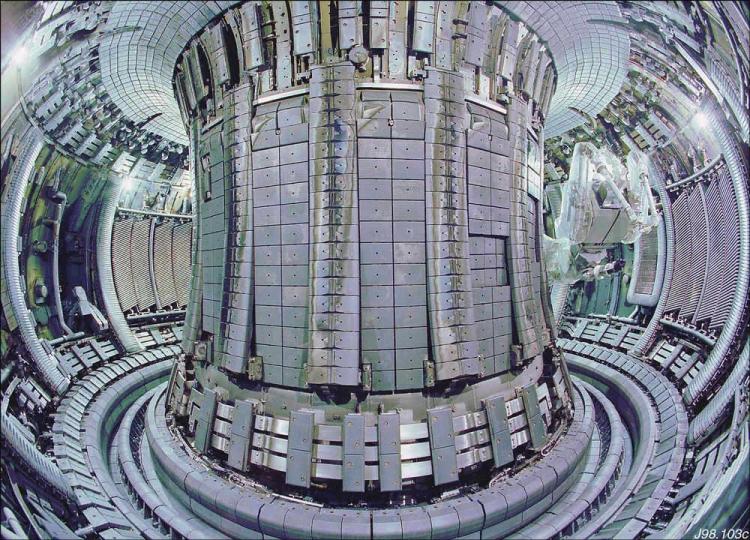Before we can begin talking about nuclear fusion, we need to briefly address the potential greenness of nuclear fission and the historical relationship between the two processes. Does nuclear fission have the potential to be extremely green? The answer is, without a doubt, yes.
First, nuclear energy produces slightly more energy than a normal fossil fuel plant but without the harmful greenhouse gasses that are produced (CO2). However, nuclear fission reactions produce waste in the form of highly radioactive spent fuel rods (Pu 239), which need to be taken to special containment facilities for several thousand or million years before becoming harmless.
Thus, the energy from these plants is attractive but the waste is completely opposite of what a green-minded person would desire. How do we solve this? Easy—eliminate the harmful spent fuel. That is exactly the current trend in nuclear fusion right now.
Not Just Science Fiction
Is nuclear fusion even possible? That sounds like science fiction! However, not only is it possible, but nuclear fusion has already occurred in experimental reactors overseas and new experimental reactors are being constructed as this article is being written. These experiments will lead the way toward commercial fusion reactors.
Nuclear fusion has been successful in several tokamak-style reactors that use magnetic fields to confine and manipulate plasma (high-temperature ionized gas) in order to basically create a miniature sun inside a container.
For years, fusion was deemed impractical because the energy required to sustain the magnetic field as well as heat the plasma to a fusionable degree was drastically more than the amount of energy produced from the small fusion reactions. This can actually be measured in what is called a factor of Q.
Such successful experiments occurred at the Joint European Torus (“torus” meaning ring-shaped) experimental nuclear fusion reactor in Oxfordshire, England. JET started its experiments in 1983 and worked with the fusion of materials called deuterium and tritium (both isotopes of hydrogen), which could be fused into either harmless helium or a radioactive isotope of helium that would have a half-life of several minutes compared to the several thousand years of current nuclear waste.
JET has paved the way for ITER, the International Thermonuclear Experimental Reactor, which is designed to bridge the gap between plasma studies and commercial fusion. The reactor is still in its construction phase overseas and will be officially operational in 2018.
This nuclear reactor will take the next step into the nuclear future, producing an expected output of 500 megawatts for a sustained 1,000 seconds compared to JET’s 16 MWs for about a second. The ultimate goal of ITER is to produce at Q-levels of 10, or 10 times the amount of energy needed to start the reaction.
How Green?
But, is nuclear fusion truly green? The answer is a complicated yes and no.
Nuclear fusion is a realistic view of producing vast quantities of energy without the harmful greenhouse gases and radioactive waste. But, there are other environmental problems with fusion. Nuclear fusion produces thermal neutrons that bombard the inner plating of the tokamak reactor, which can have a radioactive effect over a period of time. The result is the production of materials that are not as abundant as fission-spent fuel but which still need to be disposed of in the same fashion.
However, we must remember that nuclear fusion is still in the extremely experimental stages. One of ITER’s objectives is to design and test special superconducting magnets and components able to withstand these thermal neutrons and extremely high temperatures.
When it comes to nuclear energy and living green, there are other areas to explore as well. Fusion may produce high levels of energy in the future that could replace all our fossil and fission plants 50–100 years down the road. But, what if they never solve the radioactive waste problem? In fact, what about the waste that is already produced?
Well, it just so happens that scientists and physicists at the University of Texas at Austin, Texas, have design a machine and a process that combines nuclear fusion and fission to break down radioactive waste into nuclear energy. The beautiful part of this is that the machine would destroy waste at the same time it is producing energy. It is based on the tokamak design and uses the concepts of fusion wrapped in a blanket of fission to stabilize the reaction.
Nuclear waste is then fed into the reactor and “incinerated” at extremely high temperatures. The waste then becomes the fuel that perpetuates the reaction. According to Mike Kotschenreuther, a senior research scientist with the Institute for Fusion Studies (IFS) and Department of Physics, “We have created a way to use fusion to relatively inexpensively destroy the waste from nuclear fission. Our waste destruction system, we believe, will allow nuclear power—a low carbon source of energy—to take its place in helping us combat global warming.”
As living green becomes more of a necessity than a life choice and, at the same time, as the need for energy increases, fusion may be a big part of the not-too-distant future. For the most part, it is green. But, all the problems are not quite worked out of the system. There are many options and paths available to take in this field. Only time can tell us what types of energy we will be using in the future.






